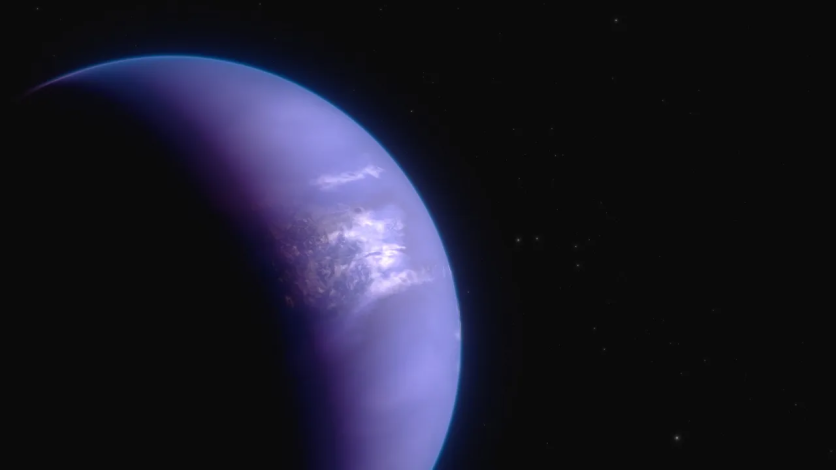NASA's James Webb Space Telescope has recently provided valuable insights into the weather patterns of a distant hot gas-giant exoplanet approximately 280 light-years away.
Using precise brightness measurements across a broad spectrum of mid-infrared light, researchers, alongside sophisticated 3D climate models and data from other telescopes, have uncovered fascinating details about the atmospheric conditions of the exoplanet WASP-43 b.

Mapping the Hot Jupiter
WASP-43 b belongs to the category of "hot Jupiter" exoplanets, sharing similarities in size and composition with Jupiter. It primarily comprises hydrogen and helium and is significantly hotter than any of the giant planets within our solar system, according to NASA.
Despite orbiting a smaller, cooler star compared to the Sun, WASP-43 b is positioned at an astonishingly close distance of only 1.3 million miles from its host star.
Due to its tight orbit, WASP-43 b is tidally locked, meaning one side is constantly illuminated while the other remains in perpetual darkness.
According to NASA, despite the nightside never getting direct radiation from the star, strong eastward winds play a critical role in distributing heat from the dayside.
Taylor Bell, a researcher from the Bay Area Environmental Research Institute and lead author of the study, emphasized the need for more precise measurements to map the planet's atmospheric dynamics fully.
The Hubble and Spitzer telescopes hinted at water vapor on the dayside and possible clouds on the nightside, but Bell says Webb's high-precision measurements were essential for mapping temperature variations, cloud cover, and more.
Webb's Mid-Infrared Instrument (MIRI) played a pivotal role in this study, capturing light from the WASP-43 system at 10-second intervals for over 24 hours.
This extensive observation period enabled researchers to calculate temperature variations across different regions of the planet as they rotated into view.
Read Also : NASA's Hubble Space Telescope Halts Science Operations After Entering Safe Mode-What Happened?
Stark Temperature Differences
The data revealed stark temperature differences between WASP-43 b's dayside and nightside. The dayside boasts an average temperature nearing 2,300 degrees Fahrenheit (1,250 degrees Celsius), which is hot enough to melt iron, according to NASA.
However, the nightside is significantly cooler at around 1,100 degrees Fahrenheit (600 degrees Celsius).
Researchers also identified a distinct "hotspot," slightly offset eastward from the point of maximum stellar radiation due to supersonic eastward winds.
The team used complex 3D atmospheric models to analyze the temperature map and found that dense high-altitude clouds on the nightside block infrared light, making it cooler and dimmer.
Webb's mid-infrared observations detected water vapor and an absence of methane, suggesting fast winds (around 5,000 mph) that transport gases between the dayside and nightside, preventing methane buildup on the cooler side.
The team believes that his wind-driven mixing evens out the atmospheric chemistry across WASP-43 b, a phenomenon not observed with previous telescopes like Hubble and Spitzer.
The findings of the research team were published in the journal Nature Astronomy.
Related Article : NASA's James Webb Space Telescope Will Look for Signs of Life in New 7 Earth-sized Planets Around TRAPPIST-1

ⓒ 2025 TECHTIMES.com All rights reserved. Do not reproduce without permission.




